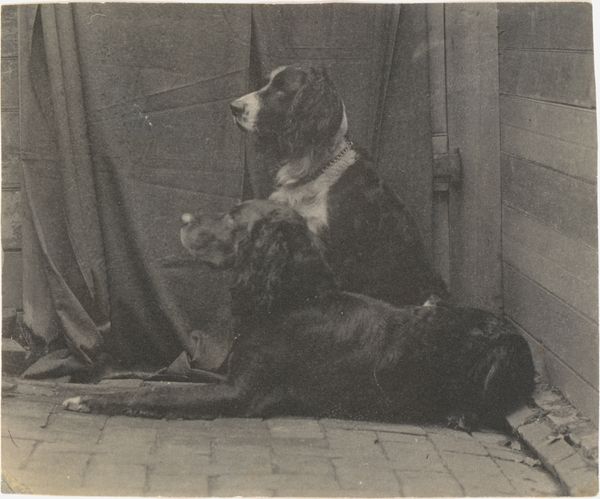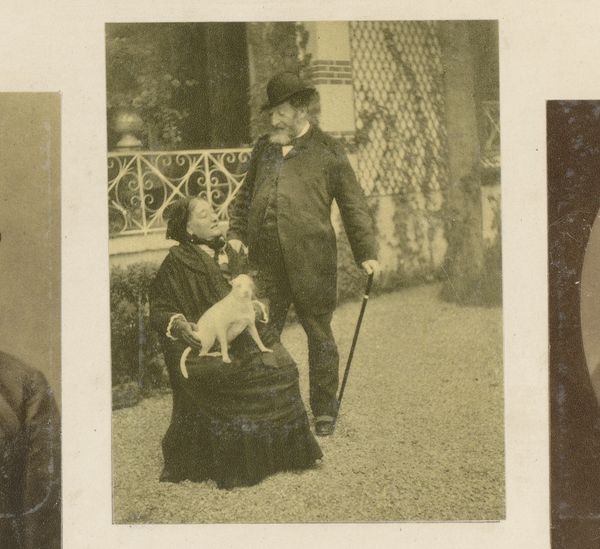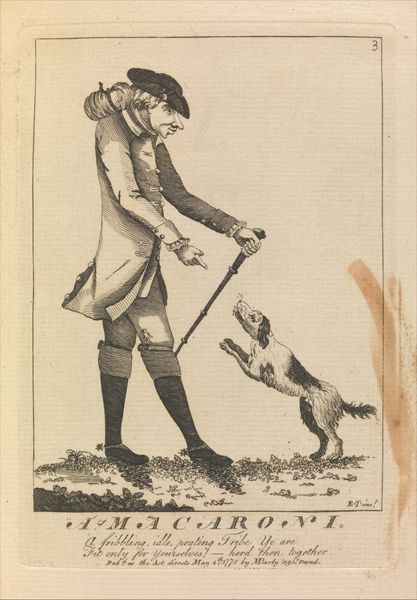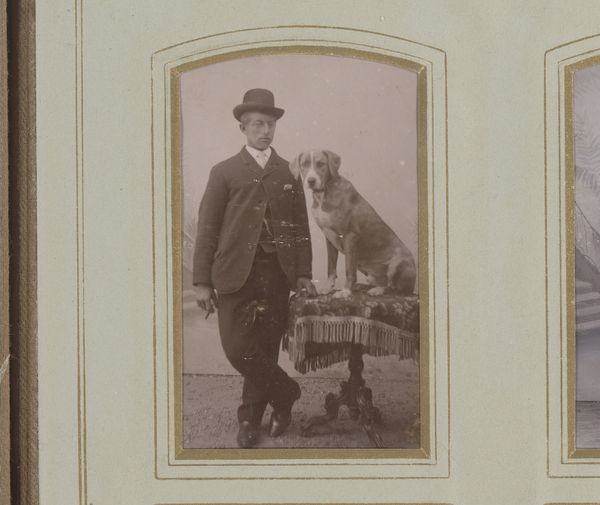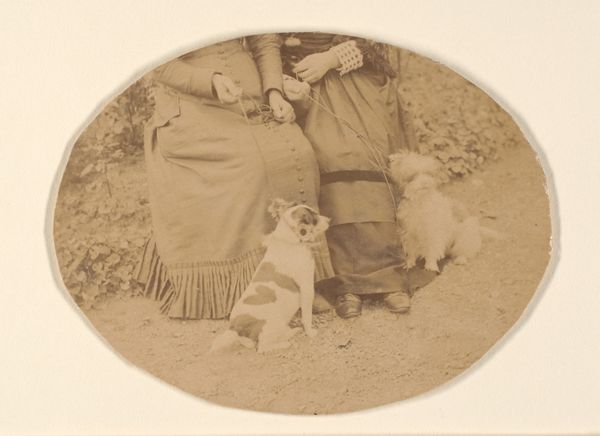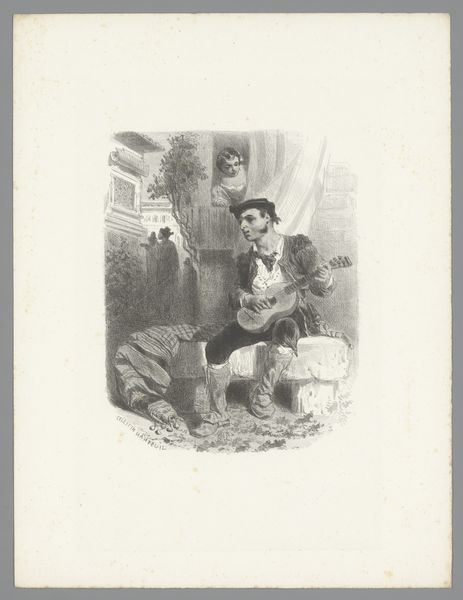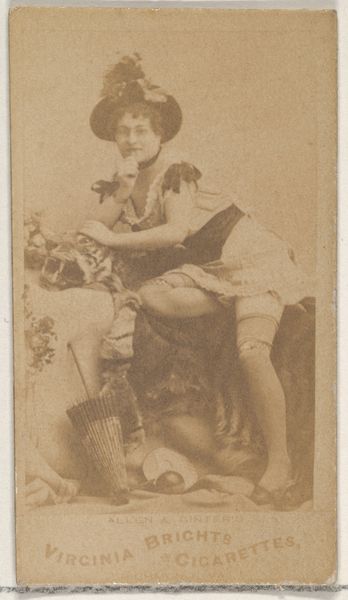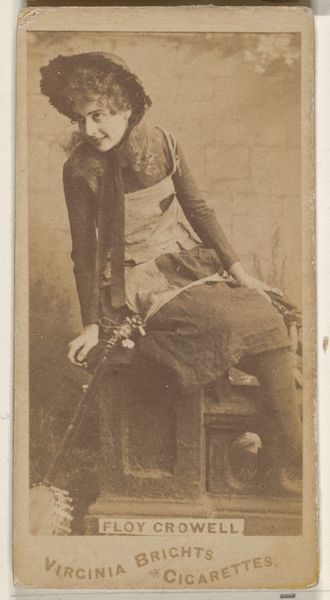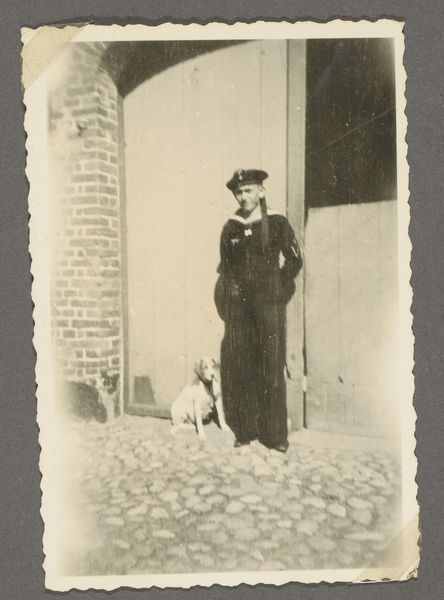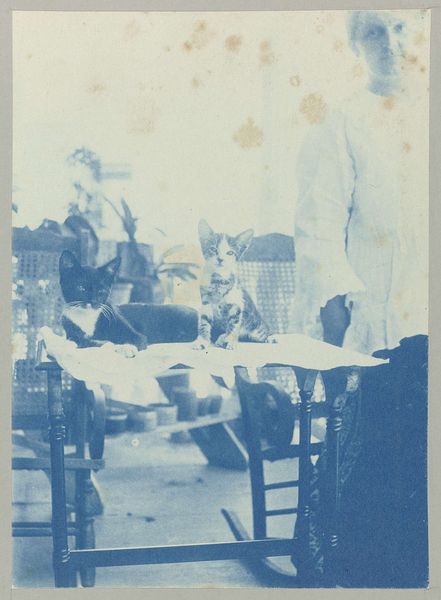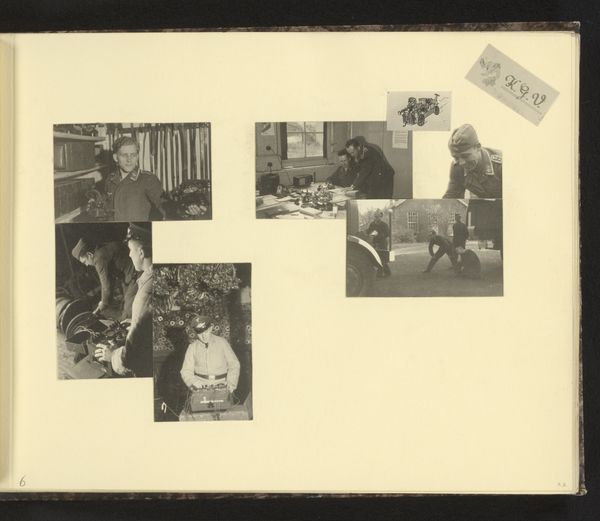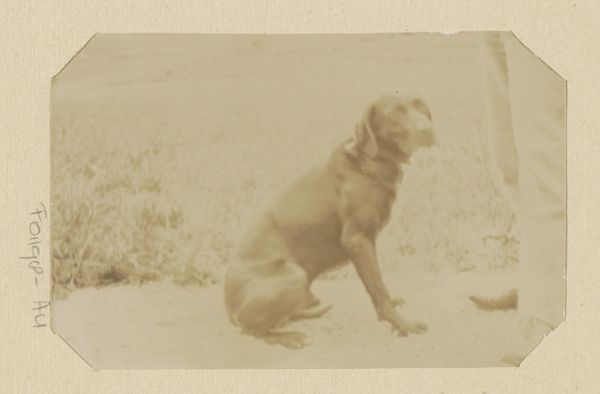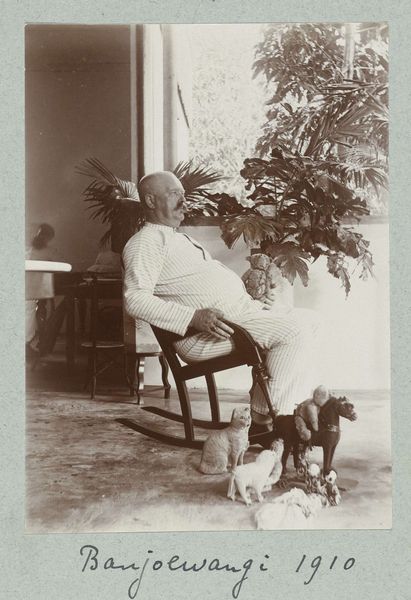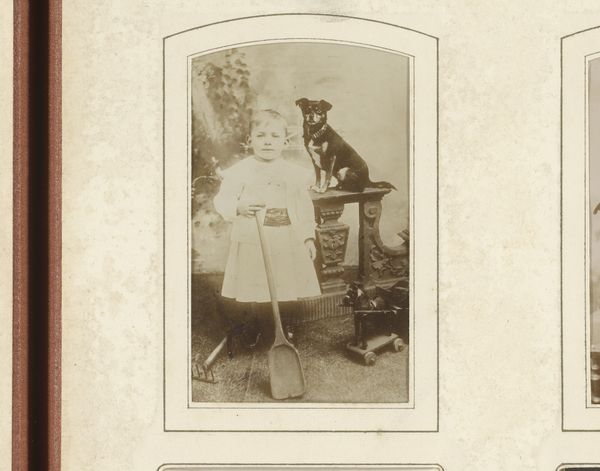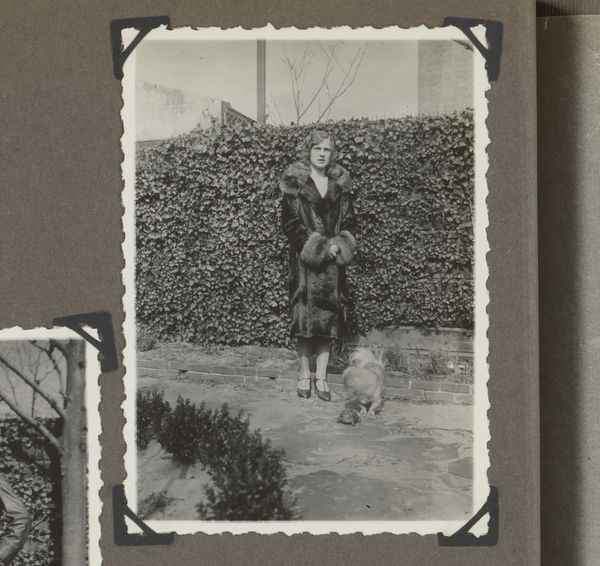
Twee mannen met een grote haas aan een draagstok, vermoedelijk geënsceneerd 1896 - 1899
0:00
0:00
photography, gelatin-silver-print
#
portrait
#
photography
#
historical photography
#
gelatin-silver-print
#
genre-painting
#
realism
Dimensions: height 111 mm, width 160 mm
Copyright: Rijks Museum: Open Domain
Curator: Here we have a gelatin-silver print dating from between 1896 and 1899, currently residing here at the Rijksmuseum. The title translates to "Two men with a large hare on a carrying pole, probably staged". Editor: The image is strikingly matter-of-fact, isn't it? There's something very deliberate in the composition. A palpable weight hangs in the scene – the limp body of the hare, the men’s strained postures, even the textures of the brick and the roughly hewn stick feel substantial and unprocessed. Curator: I find it interesting how the staging leans into the realism of a genre painting, rather than idealizing a hunting scene. The rabbit itself, in its suspended state, evokes very ancient ideas about sacrifice. It's not simply about food; it's about ritual and acknowledging nature’s power over existence. Editor: Precisely. Look at their clothing; seemingly practical, sturdy garments fitting for outdoor labor. We're seeing an almost clinical depiction of a moment tied to hunting culture. The dirt and roughness of the job, a very utilitarian image of survival. This photograph acts almost like documentation of rural labor. Curator: Yet that brings us back to its deliberate nature, that qualifier “probably staged.” The very act of documentation becomes questionable, transforming reality into a calculated display. Is it commenting on the artifice inherent even within the most ostensibly honest mediums, or simply a product of that era’s limitations? Editor: The choice of gelatin-silver emphasizes the textures but almost obscures any vivid action. It makes you consider how labor was not just performed, but visually constructed for a growing consuming public who were removed from this kind of material engagement. I keep thinking about the commerce surrounding such imagery. Were they hired to be stand-ins? Curator: A worthwhile question indeed. Consider how this portrayal would impact or affirm the viewer’s idea of societal roles within that culture. Perhaps we could reflect on how we all engage in performance and play different roles within society. Editor: I’ll be thinking about the way these early photographs mediated the distance between the consumers of imagery and the realities of labor, particularly the way resources were procured.
Comments
No comments
Be the first to comment and join the conversation on the ultimate creative platform.
